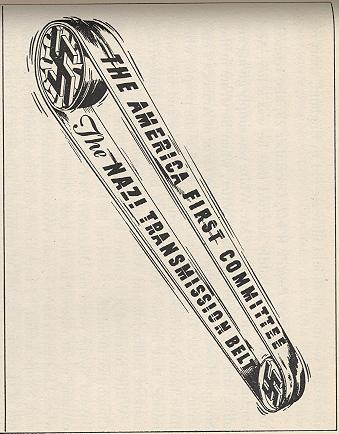 America First Committee Overview
America First Committee OverviewAmerica First Committee, founded in September 1940, was the most powerful isolationist group in America before the United States entered World War II. It had over 800,000 members, who wanted to keep America neutral. It tried to influence public opinion through publications and speeches. America First disagreed with another powerful group, the Committee to Defend America by Aiding the Allies.
America First Committee American First Committee Poster
Both groups wanted to build American defenses and keep America out of the war. But the Committee to Defend America argued that the best way to remain neutral was to aid Britain. America First thought it more important to stay out of the war than to assure a British victory. America First was dissolved four days after the Japanese attacked Pearl Harbor on Dec. 7, 1941.
America First Committee Original Four Principles:
1. The United States must build an impregnable defense for America
2. No foreign power, nor group of powers, can successfully attack a prepared America
3. American democracy can be preserved only by keeping out of the European war.
4. "Aid short of war" weakens national defense at home and threatens to involve America in war abroad.
Proposed Activities- September 5, 1940:
1. To bring together all Americans, regardless of possible differences on other matters, who see eye-to-eye on these principles. (This does not include Nazists [sic], Fascists, Communists, or members of other groups that place the interest of any other nation above those of our own country.)
2. To urge Americans to keep their heads amid rising hysteria of times of crisis.
3. To provide sane national leadership for the majority of the American people who want to keep out of the European war.
4. To register this opinion with the President and with Congress.









